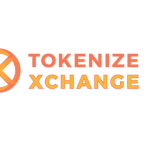During the early days of the Internet in Malaysia in mid-90s, if Internet user in Malaysia was on an ISP accessed a web server connected to another Malaysian ISP’s network, the data transactions between users and server had to pass through the nearest server overseas before reaching each other.
This means e-mails had to travel all the way to the United States before they were routed back to their destination within the country, resulting in delays and high costs to both ISPs.
In December 2006, a solution to the problem was being address, through the birth of
The Malaysia Internet Exchange – or MyIX, in short.
Today, this non-profit society was conceived for more efficient routing of the growing amount of local Internet traffic by keeping it within local networks, by facilitating direct flow of Internet traffic between users and servers on over 40 different Internet service providers’ (ISPs) networks. The bypassing of international gateways reduces the number of hops and latencies for locally hosted websites, enabling the Internet traffic between local ISPs to be now just a mere 4 milliseconds away from each other!
The establishment of MyIX has reduced the outflow of foreign exchange in terms of charges for the use of expensive bandwidth on international networks, as well as response times. The reduced latencies allow faster browsing of local websites and at a lower cost for routing Internet traffic.
A rough estimate shows that MyIX will save the country over RM2.36billion in foreign exchange outflow over 5 years from its establishment.
MyIX In Brief
Then Minister of Energy, Water and Communications, Tun Dr. Lim Kheng Yaik announced that MyIX, would be a neutral IX under the regulatory of the Malaysian Communications and Multimedia Commission (MCMC).
MyIX is operated by a consortium of local ISPs who are members, while AIMS Data Centre Sdn Bhd, Jaring Communications Sdn Bhd and Telekom Malaysia Berhad are its permanent committee members.
The setting up of the MyIX network infrastructure is funded by MCMC, with an initial of 3 reference sites which are connected via optic fiber – AIMS as the control centre of MyIX, and Fiberail which is operated by Telekom Malaysia and Jaring in Cyberjaya. Each site has equipment sitting in over 1000 square feet of space.
Because of the technology used, these equipment and machines do not need much attention. All is needed is a low temperature clean-room. Nevertheless, network performance is managed through a Network Management System Platform by engineers on a round the clock basis. Skilled engineers are tasked with monitoring and reporting performance levels of the MyIX – who troubleshoot issues that arise and more importantly, pre-empt potential problems. These are usually in the nature of links that are down or faulty port connections.
Internet Protocol version 6, IPv6
Currently, MyIX is peered through the creation of virtual circuits done at OSI Layer 2, the Data Link Layer, which requires knowledge of multi-protocol layer switching (MPLS), unlike an earlier attempt at creating an Internet exchange in Malaysia at Layer 3 of the network.
The adoption of the state-of-the art Layer 2 of MyIX emulates the peering system that is used by the London Internet Exchange (LINX). With Layer 2, bandwidth is charged on a pay-per-use basis according to the average bandwidth throughput in Mbps. Layer 2 peering also requires much fewer packet headers and together with MPLS. Layer 2 is embedded with features of IPV6.
To align Malaysia with the goals of national ICT strategy, the Government wants the industry to be IPv6 enabled from the beginning. In order to realize this goal, local ISPs like Jaring and TM have offered IPv6.
Upgrades and Strengthening
When MyIX was conceptualized, it was designed with redundancy in mind but lacked resilience. Resilience is based on backups. This means, if the fibre is cut in one location, there is an alternative channel for the data to flow which minimizes the effect of the cut or other possible mishaps which could otherwise disrupt communication.
MCMC worked towards upgrading its resilience to achieve 99.99% uptime. The development of MyIX was then divided into two phases.
- Phase 1: This phase is about the proof of concept and ironing out infrastructure needs which was completed in March 2007.
- Phase 2: The second phase was to have the exchanging nodes increased geographically to Penang, Johor Bahru and Kuantan, with the intention to have the network covered at the Northern, Southern and Eastern regions of the Peninsular Malaysia. These centres are connected to the current centres at 1 Gbps. The upgrading sprawled to the East Malaysia with the establishment of 2 other nodes- Kota Kinabalu and Kuching.
These additional 5 nodes were all established this year, 2011.
As the sole internet exchange in Malaysia, the onus is on MyIX to continuously upgrade its exchange service, emulating world’s greatest internet exchanges- London Internet Exchange and Amsterdam Internet Exchange. Through an improved service, MyIX’s will be able to attract more local ISPs joining the fraternity- enjoying affordable, timely yet efficient internet exchange.
Credit Note:
Contributed article by MCMC, the governing body of MyIX and subsidiary of the Malaysian Ministry of Information, Communication and Culture.







